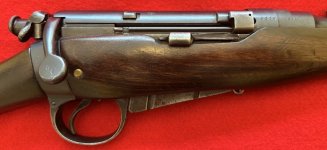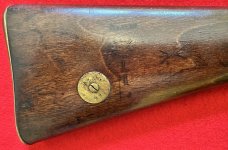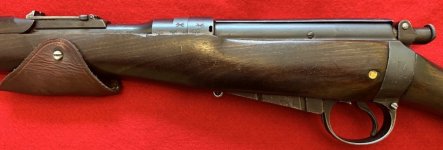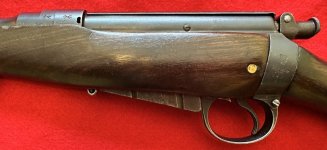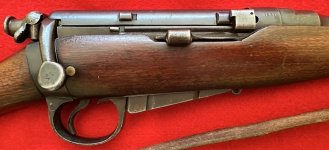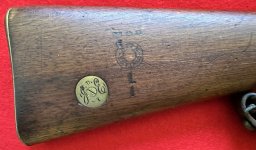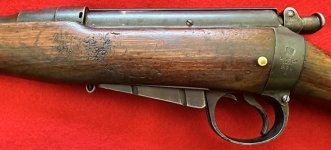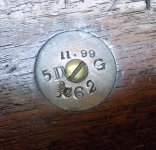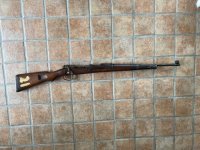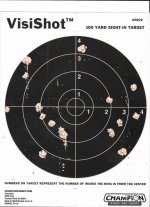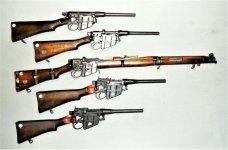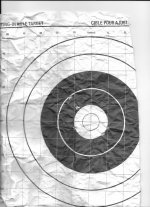Sort of an Enfield...
At some point I acquired this Swift MkIV Training rifle, in this case it's marked for Canadian WW2 service.
These odd ducks were first invented inter-war and modelled after the Pattern 1914 rifle to train home guard units in the UK (i.e. the Swift Rifle Pattern A). An improved Pattern B followed, that kept a 1 piece stock and receiver ears reminiscent of the P14, but the sights were adapted to mimic the SMLE sight picture and a wooden "magazine" added to the design, in the shape of a Lee Enfield mag. The Pattern B was replaced with the MkIII, which was of simplified manufacture, also modelled after the SMLE sight picture, and lastly in 1942, the MkIV was issued with the sight picture adapted to resemble a No.4Mk1 Enfield.
The Swift does not fire a bullet, but it's also not a totally safe and inert item. The rifle was intended to teach recruits how to hold and carry the rifle (i.e. drill), how to manipulate the bolt (it's a c@ck on close bolt modelled after the Lee Enfield), and how to shoot, prior to putting a live firearm in someone's hands. To "fire" the rifle, the trainee had to c@ck the action, disengage the safety (same location as the SMLE or No.4), squeeze the rifle tight to the shoulder to compress the butt plate safety, aim, and pull the trigger. To teach correct hold and sight picture, the rifle was hooked to a wire bale attached to a wooden target stand. The stand help a piece of paper 2cm in front of the muzzle with small target images on it, scaled to look like they were 100 meters away. When the rifle is fired, a 4CM sharp steel needle protrudes from the muzzle with surprising speed and force - it feel like .22LR recoil. This pieces the paper at a simulated 100m point of impact, based on where the trainee was aiming on the target.
Once the trainee demonstrated to the musketry instructor they could safely handle the manual of arms and produce an acceptable point of impact, the trainee moved on to live fire training with a real rifle.
The idea seems to have been to reduce the number of service rifles needed at WW2 training depots and to minimize the ammo needed to train a recruit during WW2 shortages. It's not clear to me if they still used these things after the war or not, but mine was gooped in cosmolene and was put into storage carefully for later use. You'll note the C broad arrow on the stock and Canadian rack number (850).
Sometimes these rifles could come with transit cases, the folding wooden target stand and the targets - I've only ever seen these accessories in old pictures though. Mostly you encounter bare "rifles".
DO NOT fire a Swift rifle if anyone is near the muzzle. While it won't kill someone (likely), it could really injure someone. That needle is long and is NO JOKE.
It's almost certain someone here has a MkIII, and possibly even Pattern A and Pattern B examples of the swift - if you do, let's see them!


















































